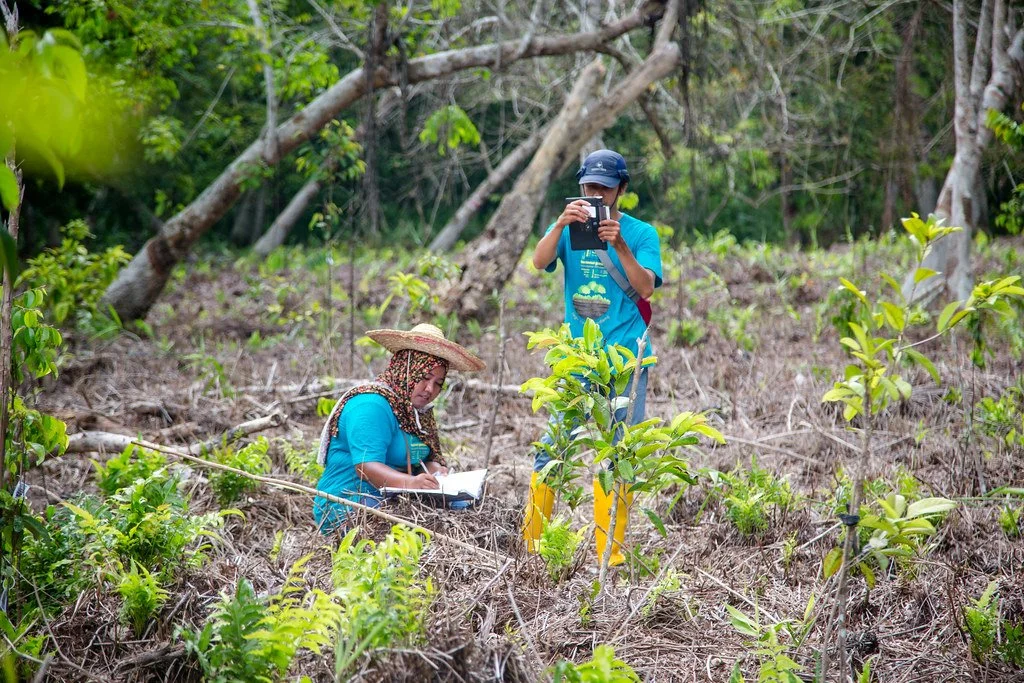Separating the Social from the Environmental?
When social indicators should be separated from conservation targets
We are facing an existential crisis. Human impact is causing unprecedented structural change to natural landscapes across the world, threatening the support systems all life depends upon. We need action that responds directly to the immediate parameters of this problem, which are biophysical in nature.
Working in the space of landscape degradation and restoration over the last several years, I’ve learned that many existing frameworks that measure and assess landscape restoration often include social considerations as indicators of success. These projects are evaluated not simply on improvements to ecological integrity, but on how much they benefit the local community.
In this post, I argue that while social considerations should be integral to the restoration process, they should be separate from the primary ecological targets.
Social considerations in restoration are essential
Photo by Aris Sanjaya/CIFOR
Restoration is inherently a human construct and activity; therefore, social considerations are not just important but required. Defining degradation and strategies for improvement requires engagement with local knowledge holders. Integrating a shared vision of what restoration looks like ensures project permanence. Community support and local stakeholder engagement underpin successful restoration projects, but should they be included as indicators of restoration success?
The case for biophysical indicators
There are compelling reasons to consider separating social indicators from ecological ones in restoration projects. The three key reasons for this are:
Objectives: The primary objective of forest restoration is ecological recovery, which is the process through which a degraded ecosystem regains its health, functionality, and resilience. The primary markers of such recovery are observable through tangible, biophysical criteria. This includes measures such as landscape pattern, habitat structure, and species diversity.
By focusing on these biophysical indicators, restoration evaluation frameworks can maintain a clear, unambiguous focus on the goal of ecological recovery. This ensures that our efforts are centred on achieving the critical goal of forest restoration: to restore and sustain the health, vitality, and complexity of our planet's forest ecosystems.
Simplicity: Restoring degraded lands is an urgent matter, and adding social indicators complicates the process. Forest restoration in itself is a complex procedure, involving the understanding of local ecology, propagation of native species, control of invasive species, and more. Adding social considerations into the mix increases the complexity, potentially delaying the implementation and achievement of restoration objectives. Furthermore, the nature of social measures themselves can pose challenges. Social indicators are often subjective, qualitative, and context-specific, making them inherently more debatable and open to interpretation compared to more straightforward, quantifiable biophysical metrics. This additional layer of complexity might slow down the progress of urgent restoration efforts.
Priorities: Social indicators can sometimes conflict with ecological objectives. For instance, a community’s goal might be to increase local employment through the use of manual labour in the restoration process, while the ecological goal might be best served by a different method such as natural regeneration. Although it's important to garner local support by providing community benefits, it's also crucial to acknowledge potential tradeoffs. If the primary aim is ecological restoration, then the evaluation framework should prioritize this. Difficult decisions might need to be made, such as choosing ecologically effective strategies even when they do not align with certain social objectives.
We can achieve both, separately
While social indicators don't directly measure ecological restoration, this doesn't necessitate their exclusion from the broader restoration process. We can ensure community benefits and uphold social safeguards throughout restoration efforts without integrating them directly as evaluative indicators. This can be achieved through two primary avenues:
Incorporating Social Safeguards as Pre-requisites: By complying with established social safeguard mechanisms, we can respect and uphold community interests. These mechanisms could include adherence to principles of Free, Prior, and Informed Consent (FPIC), conducting rigorous Social Impact Assessments (SIAs), and implementing equitable Benefit Sharing Mechanisms. This approach ensures social considerations are integral to the restoration process, even if they are not the primary measure of success.
Promoting Collaborative Restoration: Requiring local stakeholder engagement to inform the management plan, indicators, and targets can foster a co-constructed approach to restoration. This empowers local communities, values their knowledge and perspectives, and promotes a sense of ownership and commitment to the restoration project.
While these approaches keep social considerations separate from the primary ecological objectives, they still weave a strong social fabric around the ecological core of restoration, fostering a holistic, sustainable, and inclusive restoration process.
Guiding Ecological Integrity in Reforestation
In striving to bridge ecological and social aspects in forest restoration, I've developed a tool to help steer our efforts: the Guiding Ecological Integrity in Reforestation (GEIR). GEIR is an innovative framework that measures ecological advancements in reforestation initiatives, sets achievable restoration goals, and assesses projects on their contributions to ecosystem health. Operating on a points-based system, GEIR recognizes diverse restoration efforts, providing a gradient of value based on tangible outcomes. Despite its focus on biophysical indicators, it incorporates social safeguards, ensuring a balanced approach. Moreover, GEIR underscores the importance of collaborating with local and indigenous communities, tailoring the framework to be both applicable and relevant.
To get a better understanding of how GEIR works, check out the detailed concept note on my blog. It provides an insightful look into the tool's design, guiding principles, and its promising role in driving a more balanced, holistic approach to forest restoration.
A Call to Action
As we continue to navigate the complex landscape of restoration, your voice matters. Please share your thoughts on the idea of distinguishing social factors from ecological targets in the comments below. If you resonate with the potential of this approach, do share this post within your network. Let's fuel a global dialogue on effective, sustainable, and inclusive strategies to restore our planet.

